Teaching Skills that Matter through Health-related Project-based Learning Experience
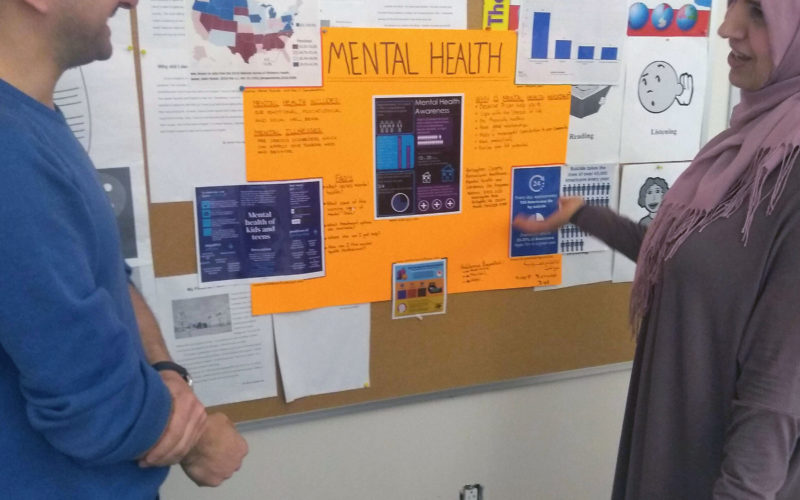
“Doing the project made me feel like I could do hard things in English.”
“I am more confident.”
“I learned from my classmates, not only the teacher.”
“I had to communicate with people in English.”
by Lyle Ring
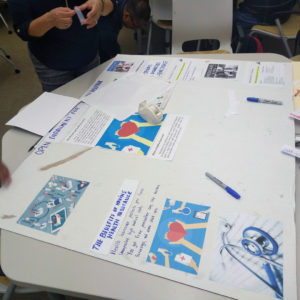 Health literacy has always been important for our adult learners, but with the COVID-19 pandemic it has become essential. The Teaching the Skills that Matter toolkit (TSTM) highlights health literacy as one of its content areas, providing lessons such as finding health information on the Internet, understanding the meaning of good health, and recognizing the cost of smoking (For more information about TSTM, see the April 2020 issue of PROGRESS (pp.11-12)).
Health literacy has always been important for our adult learners, but with the COVID-19 pandemic it has become essential. The Teaching the Skills that Matter toolkit (TSTM) highlights health literacy as one of its content areas, providing lessons such as finding health information on the Internet, understanding the meaning of good health, and recognizing the cost of smoking (For more information about TSTM, see the April 2020 issue of PROGRESS (pp.11-12)).
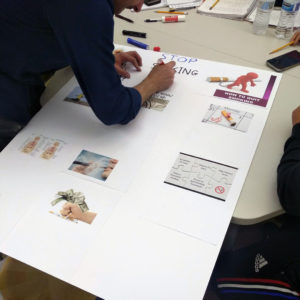 Building on the TSTM lesson, finding health information on the internet and utilizing project-based learning, my students and I created a health-related project-based learning experience. The goal of the project was to gather information on a health related topic, organize it onto a poster, and present the information during a showcase. I did this project with intermediate English language learners (ELLs), but this project could also work with advanced ELL students or in an ABE or GED® classroom.
Building on the TSTM lesson, finding health information on the internet and utilizing project-based learning, my students and I created a health-related project-based learning experience. The goal of the project was to gather information on a health related topic, organize it onto a poster, and present the information during a showcase. I did this project with intermediate English language learners (ELLs), but this project could also work with advanced ELL students or in an ABE or GED® classroom.
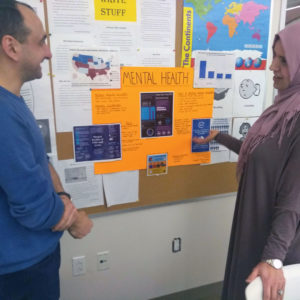 I began the project by breaking my learners into groups of about five to six and giving them a survey of the different roles within the group; such as group leader, researcher, and graphic designer. The survey allowed me to help them choose roles in which they felt comfortable and created a teachable moment for me to touch upon self-awareness, one of the nine (9) skills that matter. Once the groups were formed and roles were established, the groups chose a topic from a provided list or proposed one of their own.
I began the project by breaking my learners into groups of about five to six and giving them a survey of the different roles within the group; such as group leader, researcher, and graphic designer. The survey allowed me to help them choose roles in which they felt comfortable and created a teachable moment for me to touch upon self-awareness, one of the nine (9) skills that matter. Once the groups were formed and roles were established, the groups chose a topic from a provided list or proposed one of their own.
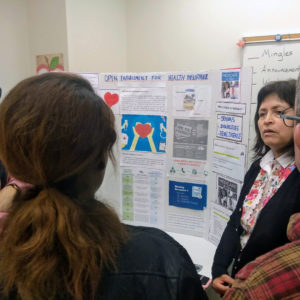 For two weeks, the learners spent about 30 minutes each class gathering information, deciding on images and text for the poster, and putting the posters together. As has often been the case when I do project-based learning, my students took over the reins and showed great initiative. For example, I did not assign any specific homework for this project, but many learners chose to gather information outside of class. While I provided some basic supplies, the learners took ownership of their final poster and many brought in supplies from home. One learner even reused a tri-fold poster board from a project their child completed for school.
For two weeks, the learners spent about 30 minutes each class gathering information, deciding on images and text for the poster, and putting the posters together. As has often been the case when I do project-based learning, my students took over the reins and showed great initiative. For example, I did not assign any specific homework for this project, but many learners chose to gather information outside of class. While I provided some basic supplies, the learners took ownership of their final poster and many brought in supplies from home. One learner even reused a tri-fold poster board from a project their child completed for school.
Their final poster needed to include: an explanation of the topic and why it is important; some graphics or visual images; a frequently asked questions section; websites with more information; and local resources with phone numbers or addresses. Each group presented their poster during a showcase and we invited other adult ELL classes to come explore each poster. Even though the presentations were given in English, one learner suggested using their home language to help explain more complex vocabulary to those with lower English proficiency. Using multiple languages, all the attendees were able to understand the useful health information presented.
Throughout, I observed skills from the TSTM project being practiced and solidified through the hard work of my students. As with any group project, learners had to collaborate, compromise, and problem-solve when working on the different portions of the poster. At times, learners disagreed about which information was important and had to use interpersonal skills and conflict resolution skills in order to come to a consensus. The learners also gained confidence through this project because they became more knowledgeable in a topic that was important to them and were able to explain the information to others. Finally, the learners developed important critical thinking skills when assessing information and sources on the Internet.
Through this project, the learners not only gained important health knowledge, but they also improved their confidence in speaking, particularly on challenging topics. At the conclusion of the project the students did an exit survey of their experience and responded with quotes like, “Doing the project made me feel like I could do hard things in English;” “I am more confident;” “I learned from my classmates, not only the teacher;” “I had to communicate with people in English.”
The following guide can help you conduct this TSTM health-related PBL experience in your program or classroom.
Public Health Information Posters Assignment
Public health relates to health issues that affect the community. This project will take place over 2-3 weeks but not every day. You will be in a group of 5-6 people. You will have a specific job but you also must help your group-mates with their jobs.
Project Goal: As a group, you will create a poster about a public health issue. Your poster will be informally presented to other students in our class and other classes. It must include the following:
- A brief explanation of your topic. (Why is it important?)
- Graphics (At least 1 photo, drawing, or graph)
- Frequently Asked Questions
- Websites with more information
- Local resources with address or phone number
Step-One
Topic: As a group choose a public health topic (see below for suggestions). Check with your teacher to make sure it is not already being done by another group.
|
|
|
Step-Two
Make a plan: What do you need to do to make sure your project is done on-time? Who will do it? Consider the following general steps: 1.) Gather information 2.) Put together a rough draft 3.) Check you work 4) Design the final poster 5.) Create the final poster.
Step-Three
Find information: The following are some websites you can use to find information about your topic.
- Medicine Plus
- Arlington Public Health
- World Health Organization
- Mayo Clinic
- National Institutes of Health
- Family Doctor.org
Step-Four
Work: Work with your team to put together this project. IT IS HARD! But by working together and helping one another you can do it! We will have volunteers available to help teams with English, computers, etc.
Step-Five
Present: When our project is complete, we will have poster presentations. Students and teachers will come by and ask you about your topic. It is fine to speak with lower-level students in another language if helpful to them.
Access & download this Public Health Information Posters Assignment.
 Lyle Ring ([email protected]) works as an English as a second language (ESL) teacher and contract coordinator with the Arlington Education and Employment Program (REEP). He has been working with the Teaching the Skills that Matter program since its inception in August 2019.
Lyle Ring ([email protected]) works as an English as a second language (ESL) teacher and contract coordinator with the Arlington Education and Employment Program (REEP). He has been working with the Teaching the Skills that Matter program since its inception in August 2019.